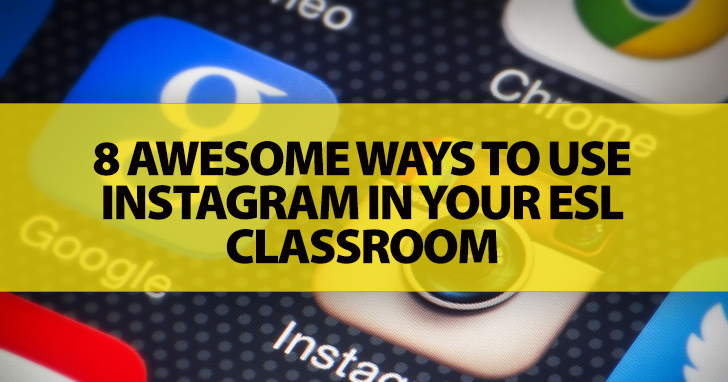8 Awesome Ways To Use Instagram In Your ESL Classroom


This is especially true when teaching English for those going to work in the field of marketing and social media writers. Global companies have seized upon the effective and popular social media tools for advancing their advertising, and they are hiring more and more people to be writers and advertisers to spread their image online. Here are some top tips for teaching the media generation!

In advertising, less words is more; even more so when it’s online. Using Twitter’s character-restricted updates can help students to say more using less. But it isn’t easy; writing with fewer words takes time and a strong mastery of language. Practice giving students longer passages or stories and having them reduce it to a single sentence while still keeping the same idea.
Thanks to Twitter, hashtags are showing up everywhere, even in handwritten essays (true story!) One thing is clear, hashtags aren’t going anywhere and they take a special understanding of language to make an effective hashtag. In order to teach hashtags, you first need to understand them yourself. A hashtag is simply a label or code that some social media programs recognize so they can group similar posts together. For example, if we were watching the Olympics, and I want to make a comment, I would add #London2012 to the end of my post. Then, I can do a search to see who else is commenting on the Olympics by doing a search for the same hashtag.
Practice hashtags in your classroom by creating an assignment and then asking students to create an appropriate hashtag. If you use an online environment (see below), tell students to post their questions online using the hashtag so other students can help with that particular assignment.
There’s no better authentic practice than getting your students on the web as early as possible (as if they aren’t already!) There are innumerable options for managing your class online. Here are some suggestions for programs and uses:
Much of the media writing we see is based on non-literal writing, or English that can be understood on more than one level, such as puns and idioms.
An often overlooked aspect of working on computers is typing. If students need to type in English, it would be useful to have a standard QWERTY keyboard. If students are used to typing on the standard keyboard of their country, it can be difficult to adjust. Typing can take an unnecessarily long time if students are unfamiliar or uncomfortable with finding the letters for English on a keyboard. Find a good typing program on the Internet; there are countless free ones! I recommend http://www.typingweb.com because students can make an account and track their practice without having to download any programs.
Social media is the business of the future, and effective English is an essential part of this. Help prepare you students in the most authentic way possible by taking advantage of all of the tools available to you for educators online!
What else should media writers know?